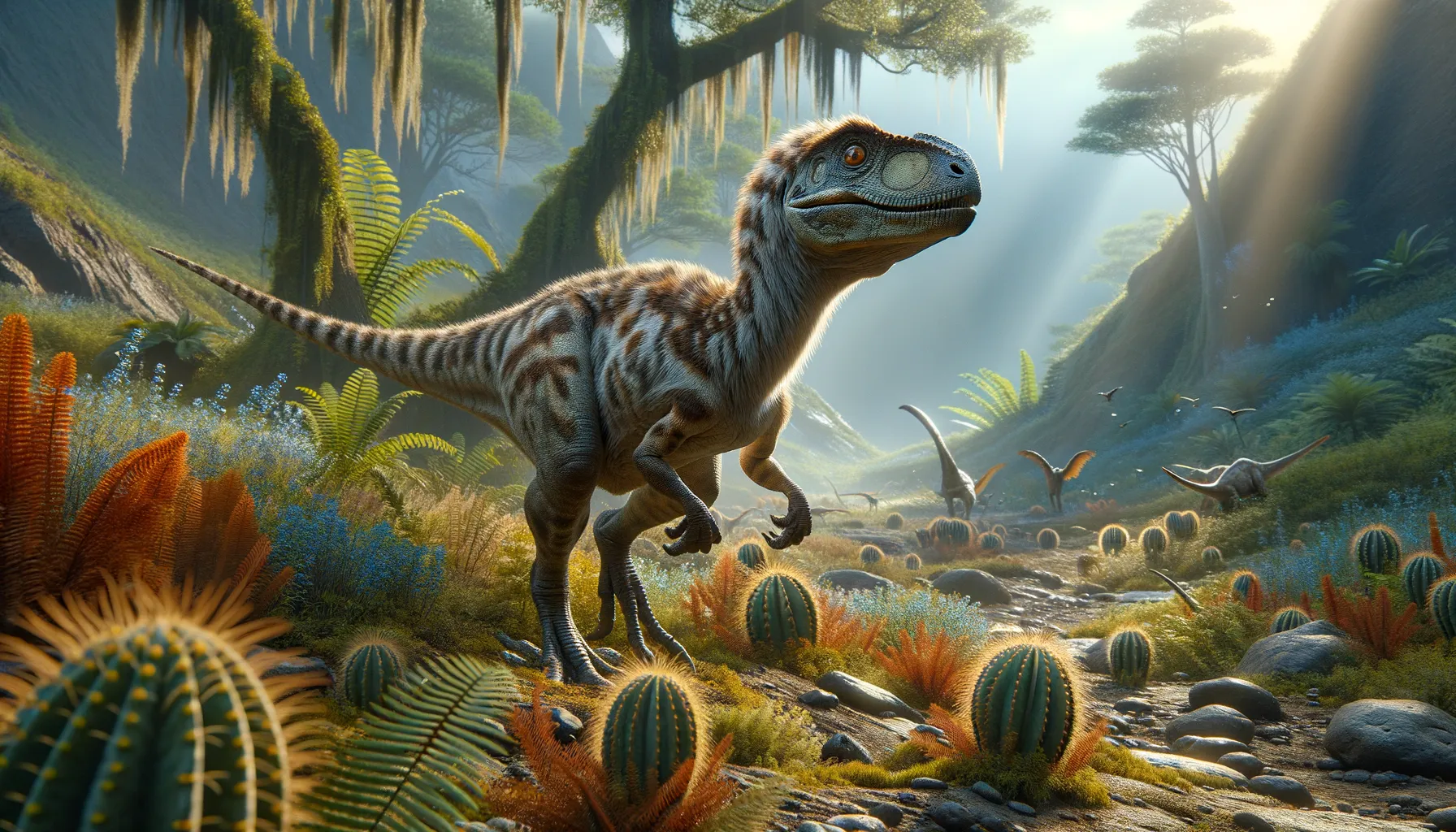
Euronychodon
Mysterious predator of the Cretaceous skies!
Period
Cretaceous
Length
Exact size unknown; likely small as indicated by its teeth.
Height
Presumed to be small, comparable to modern-day chickens.
Weight
Estimated to be quite light, similar to small birds.
Euronychodon is a small theropod dinosaur known primarily from its distinct teeth, which suggest a bird-like lineage. Fossils have been sparse, leaving much about its appearance and behavior to speculation. It is thought to have roamed during the late Cretaceous period. Its existence highlights the underestimated diversity of small theropods in ancient ecosystems. While direct evidence is limited, it offers exciting avenues for further paleontological exploration.
Diet
Euronychodon likely had a carnivorous diet, inferred from its sharp teeth adapted for catching prey. Its diet might have included small vertebrates and insects. Given its presumed bird-like traits, it may have employed agility to capture prey efficiently.
Hunting
Euronychodon probably relied on swift hunting techniques, using its agility to pursue small prey. The predation strategies are inferred based on tooth structure, suggesting it snapped quickly at evasive targets. It may have been solitary, relying on stealth and speed.
Environmental challenges
Euronychodon lived during the late Cretaceous, a time of diverse ecosystems and changing climates. It faced challenges such as competition for resources with other small theropods. Predators and changing habitats would have required adaptable survival skills. Additionally, fluctuations in food availability and environmental transformations likely impacted its population dynamics.
Speed
Likely swift and agile, given its presumed bird-like characteristics.
Lifespan
Specific lifespan unknown but estimated similar to small modern birds.
First discovery
First discovered in Portugal in 1991 from isolated teeth.
Fun Facts
- Euronychodon is known primarily from just teeth fossils, making it a bit of a mysterious dinosaur!
- The name Euronychodon means 'European claw tooth', referring to its claw-like teeth.
- These dinosaur fossils have been found in both Portugal and Romania, indicating that they roamed parts of Europe during the Late Cretaceous period.
- Euronychodon's classification is uncertain, but it is believed to be a small theropod, which means it was likely a carnivorous dinosaur.
- Despite limited fossil evidence, many scientists think Euronychodon may have been related to the better-known dromaeosaurs, the group that includes Velociraptor.
- The discovery of Euronychodon teeth in multiple locations helps paleontologists understand more about the diversity of dinosaur species in ancient Europe.
- Euronychodon's teeth are distinct because they lack serrations, which makes them quite unique compared to the teeth of other predatory dinosaurs.
Growth and Development
The exact growth rate of Euronychodon remains a mystery due to limited fossil evidence. However, its potentially bird-like lineage suggests rapid development, similar to avian species today. Hatchlings might have grown quickly to decrease vulnerability to predators. Developmental biology was likely adapted to its unstable Cretaceous habitats, necessitating swift maturation.
Habitat
Euronychodon inhabited parts of what is now Europe, particularly Portugal. It likely thrived in varied environments, possibly coastal forests or open plains. These habitats offered ample hiding spots and potential for agile hunting. The presence in these areas suggests it adapted well to diverse environmental conditions, contributing to its survival.
Interaction with other species
Euronychodon likely shared its habitat with various small and large dinosaurs, leading to possible competition for food. Its interactions were likely dictated by survival needs, such as avoiding larger predators. It might have exhibited territorial behaviors to protect feeding grounds. Cooperation or direct interaction with similar-sized theropods remains speculative.
Natural lifespan
Its natural lifespan is speculated to be short, akin to modern small birds.
Reproduction
Like many theropods, Euronychodon probably laid eggs. Clutch size and nesting behaviors remain unknown, but it likely ensured eggs were hidden from predators. The reproductive strategy might have included seasonal nesting, akin to some modern birds. Parental care is speculative but could have involved guarding eggs or hatchlings.
Social behaviour
Euronychodon's social habits are largely unknown; it may have been solitary. If bird-like, fleeting social interactions might have occurred during mating seasons. Its behavior might have been driven by the need to hunt without interference. Observations of social patterns depend heavily on further fossil evidence.
Fossil locations
Euronychodon's fossils, primarily teeth, have been found in Portugal. The exact number of discovered specimens is limited, restricting comprehensive analysis. These finds underscore Portugal's importance as a region for Cretaceous epoch studies. Ongoing excavations may yield more clues about this elusive dinosaur.
